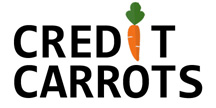The Toronto-Dominion Bank (TD Bank) is one of the largest banks in Canada, and one of the top 10 largest banks in all of North America.
As one of the leading banks on the continent, they have a large basket of investment products aimed towards retail investors such as ourselves. We previously discussed the keys to creating a robust investment portfolio, and one of these keys is investing in index funds.
Today, we’re going to take a look at TD’s offering of index funds.
TD Index Mutual Funds
Before we get to the actual funds, let’s take a look at the different “series” of funds that they have. They’ve got a wide range of flavors including “investor”, “advisor”, “D-series”, “F & FT series”, “e-series”….and the list goes on.
The only thing you really have to know is that you should only buy their “e-series” index funds.
The other series have higher management fees, and the only “benefit” you get is that you can call them and speak to an advisor about your investment – rather than doing everything online. With index funds, there is no need to speak with an advisor since the fund literally just tracks their respective stock index.
With that out of the way, let’s take a look at the TD e-series index fund offerings. Here are the TD index funds that you should care about:
- TD Canadian Index Fund – e (TDB906)
- TD European Index Fund – e (TDB906)
- TD International Index Fund – e (TDB911)
- TD Dow Jones Industrial Average Index – e USD (TDB953)
- TD Dow Jones Industrial Average Index – e CAD (TDB903)
- TD US Index Fund – e USD (TDB952)
- TD US Index Fund – e CAD (TDB902)
- TD Nasdaq Index Fund – e (TDB908)
TD e-series MER
The “MER” of a fund is the “management expense ratio”. This is how much you pay the fund companies for owning the funds.
So what are the fees associated with these TD index funds? In general, they range from 0.28% to 0.50%.
The TD e-series MER for a Canadian index fund is usually on the lower end of 0.28%. The US index funds are typically around 0.33%, and the global equity index funds are usually around the 0.45%-0.50% range.
For the latest on TD index fund fees check out: https://www.td.com/ca/en/asset-management/funds/solutions/mutual-funds/
The fees on these funds are much lower than non-index mutual funds, but are still higher than index ETF’s.
However, these funds allow you to buy without paying a trading commission. This is ideal if you’re just starting out and don’t have enough money to get a good deal on low trading commissions yet.
If you’re interested in ETF’s, then check out this article that goes over the differences between ETF’s and mutual funds.
Which TD index fund should you buy?
This question is really tough to answer as it depends on your overall portfolio.
If you’re just starting your investment journey, and have absolutely no idea what your portfolio should be then we suggest starting with the following.
1. Open a TD TFSA mutual fund investment account.
2. Set up several Pre-authorized purchasing plans (PPP). This will automatically take money from your chequing account and invest in TD index funds at regular intervals of your choosing.
3. Set up a PPP of $25 for TD Canadian Index Fund – e (TDB906) to buy on a weekly or monthly basis.
4. Set up a PPP of $25 for TD US Index Fund – e CAD (TDB902) to buy on a weekly or monthly basis.
Let’s these plans run for a year, and you can evaluate whether you’re happy with the results. At the very least, it’ll allow you to get your feet wet with index fund investing so that you’re able to make more informed decisions for your next investment.
We are not financial advisors, and no content on this site should not be taken as financial advice. No guarantee can be made if you invest based on the information provided on this blog. We make no warranty of any kind regarding the blog and/or any content, data, materials, information, products or services provided on the blog.












Leave a Comment